

Old English lavender is grown for its beauty and fragrance. It’s very popular in gardens!
Essential English lavender facts
Name – Lavandula angustifolia
Family – Lamiaceae
Type – herb sub-shrub
Height – 2½ to 4 feet (60-90 cm)
Exposure – full sun
Soil – ordinary, well-drained
Foliage – evergreen – Flowering – early/late summer (weather dependent)
Read also:
Choose a spot with a lot of light and excellent drainage.
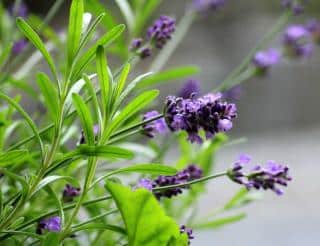 Add organic material to the soil, but not so much that the soil stays soggy when watered.
Add organic material to the soil, but not so much that the soil stays soggy when watered.Although acidic soil won’t stop its growth, it favors neutral to alkaline soil.
Make sure you plant it in a part of the garden exposed to full sun.
When left to grow wild, this lavender can grow as high as 1 or 2 yards (1 to 2 meters), but it is almost always trimmed into a nice, round mound.
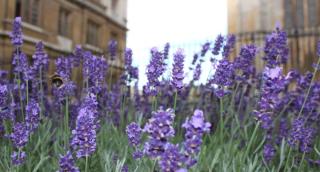 Leaves have a silver hue and are from 1 to 2½ inches long, but only up to ¼th inch wide (2–6 centimeters long and 4–6 millimeters wide).
Leaves have a silver hue and are from 1 to 2½ inches long, but only up to ¼th inch wide (2–6 centimeters long and 4–6 millimeters wide).Flowers bloom only once a year and last around 3-4 weeks. After this, they turn to a gray-bronze hue as they slowly dry up.
Stem cuttings are the best way to propagate this lavender. Just after pruning the shrub, plant the woody trimmings in sandy soil mix. Many will sprout and become new plants!
Clump division and seeds are equally effective.
Water young plants thoroughly and regularly. Do so only rarely when older.
Apart from once or twice upon planting, there is no need to water English lavender.
It tolerates drought and is thus famous for its ability to need minimal water for survival.
The technique is the same for all varieties of lavender.
On one hand, it is famous for its aroma or scent. You can smell a relaxing fragrance when the leaves and flowers are crushed or brushed into. For this, it is usually harvested, dried and conserved.
On the other hand, the vibrant blue-purple flowers illuminate the garden. They sway along the summer breeze attracting buzzing bees and fluttering butterflies.
Here are a few manners in which English lavender is used:
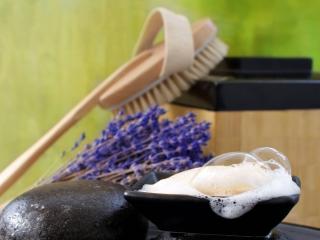 Flavor for cordials or liquor drinks
Flavor for cordials or liquor drinks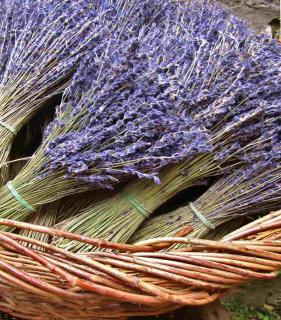 It is good to harvest when flowers are just starting to open. Any later and individual flowers fall off the stalk upon drying.
It is good to harvest when flowers are just starting to open. Any later and individual flowers fall off the stalk upon drying.
Cut stems just above the portion that has lots of leaves.
There are nearly two hundred varieties and cultivars of English lavender.
On top of the type species, plain Lavandula angustifolia, the most famous (and easily found in garden stores) are the following:
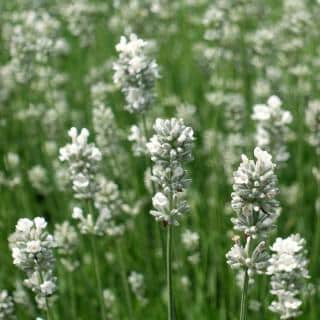 English lavender is one of the most common lavenders, so it is often cross-pollinated with others to produce new offspring. These are collectively called “Lavandin“.
English lavender is one of the most common lavenders, so it is often cross-pollinated with others to produce new offspring. These are collectively called “Lavandin“.
Here are the two nice English lavender hybrids:
English lavender, with scientific name Lavandula angustifolia, is also called simply “common lavender” or “true lavender“.
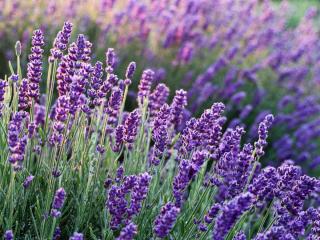 This garden lavender is part of the mint family. It is considered an herb, but it’s in fact an herbaceous perennial. This means above-ground parts may die off during cold winters. In spring and summer it regrows from surviving roots.
This garden lavender is part of the mint family. It is considered an herb, but it’s in fact an herbaceous perennial. This means above-ground parts may die off during cold winters. In spring and summer it regrows from surviving roots.
It is so beautiful and fragrant that it is known as “the queen of herbs” in herb gardens.
Interestingly, English lavender is native to the Mediterranean (Spain, Italy, France and Croatia) and not at all to England. Simply, Englishmen were among the first to make widespread use of it in gardens as an ornamental plant. Today, however, many compare English, French and Spanish lavender to see which fits them best.
Among other interesting properties:
Disease is the only challenge when caring for Lavandula angustifolia. Although its flowers are food for butterflies like large white, you won’t see any caterpillars chewing on its leaves.
Rotting roots is the most common problem with this plant.
Ensure excellent drainage upon planting and mulch with mineral mulch.
English lavender is one of the Septoria host plants.
Grow it in pots that drain well. The round mound it forms will make it look very good!
the best flowers I never planted in my garden
thank you for this guide, very interesting